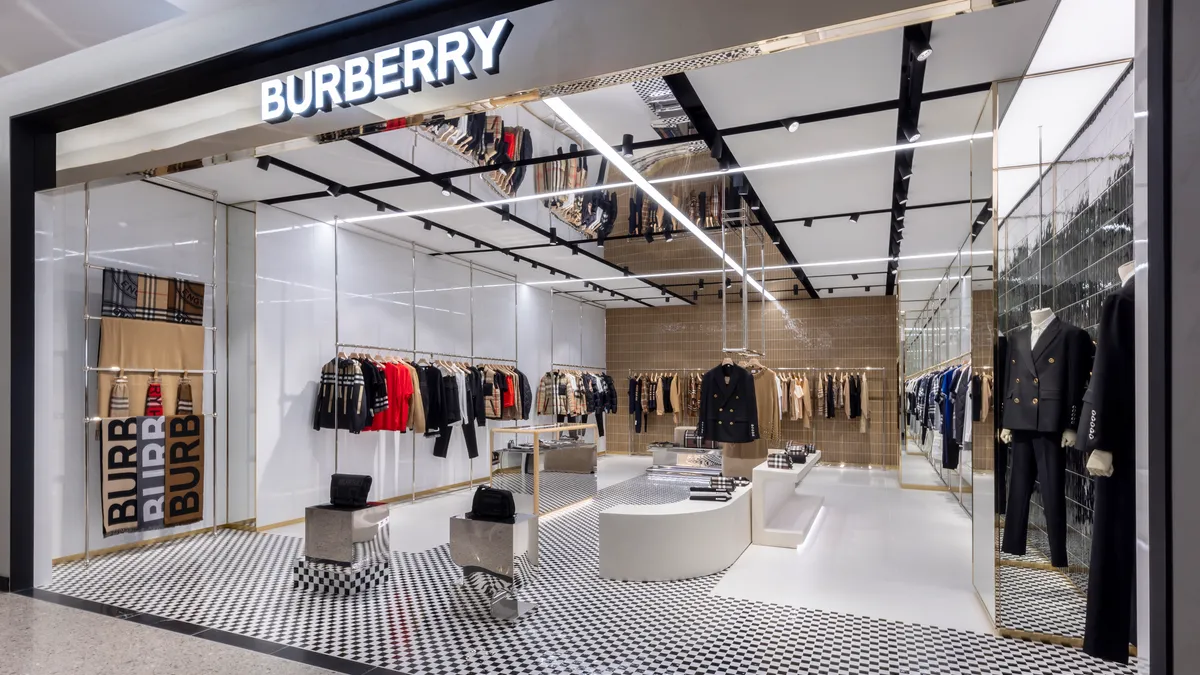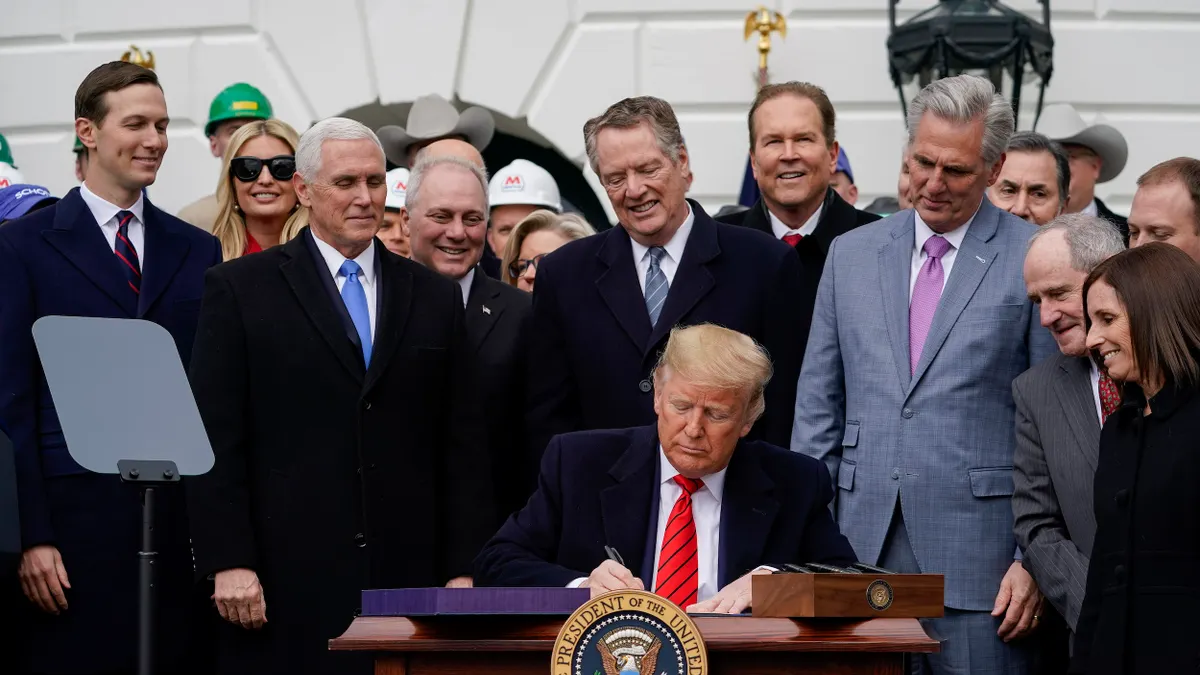This is a contributed op-ed written by Kim van der Weerd, former manager of Cambodia-based garment factory Pactics Phnom Penh and current co-host of "Manufactured," a supplier-perspective podcast.
2020 was a year of risk and resilience for supply chains, upstream and downstream. A pandemic, a social justice movement and an election year converged to create abnormal challenges. Some companies thought managing supplier reputation was an integral strategy to mitigating disruptions.
When a supplier ends up on the news, for example, having guilt by association might be damaging, right? Though the concern may be legitimate, it's the wrong approach to supplier relations.
If we talk about suppliers as risks to be minimized, we imply that reputational risk is simply a matter of "bad apples." In other words: Undesirable reputational risks are the result of bad decisions by bad people.
The further subtext is that brands and retailers are not implicated in human rights scandals within their supply chains. The extent of brand and retailer responsibility is due diligence, transparency. Not only is this often rooted in racist stereotypes about suppliers, it enables brands and retailers to claim a moral monopoly.
Another point of view
During my time as a garment factory manager, the company financed the cost of production six to nine months before receiving payment. We were also required to produce to a forecast, not firm order commitments, meaning there was little guarantee that the goods we were bankrolling would eventually be purchased.
If assuming most of the risk on behalf of our customers (brands) isn't a valuable asset, I don't know what is.
Remaining in the game also required assuming increasing amounts of overhead. More and more customers expected a full service: In addition to the manufacturing, we found ourselves having to acquire expertise in product development, sourcing and logistics. None of this justified a higher price. If anything, despite significant (and needed) increases in minimum wages, we were having to reduce prices year on year — without increases in volume.
If assuming most of the risk on behalf of our customers (brands) isn't a valuable asset, I don't know what is.

Why do manufacturers put up with such poor purchasing practices from customers? The hard truth of the industry is that the distribution of risk and reward across the supply chain is extremely unequal.
Most garment factories have small profit margins, which, coupled with the up-front financing of production costs and bad payment terms, means tight cashflow. The risk has been outsourced, and the liability shifted to someone who has neither the luxury of being able to negotiate nor the cash reserves to cope with it. And yet, too often, it's suppliers who face the indignity of being labeled the problem.
A better alternative
Supply chains should be talking about the systemic nature of the challenges we're collectively up against, and in which we are all implicated.
If a supplier ends up on the news for a negative reason, brands should consider casting their gaze inward. Are their purchasing practices creating the right incentives for suppliers? Are the internal bonus schemes incentivizing the values the marketing team claims to stand for? Is there alignment between a brand's product development, purchasing, and sustainability teams? How have financial risks between buyer and supplier been distributed?
Instead of advising brands and retailers to continuously scan for new suppliers, brands and retailers should be advised to invest deeply in supply chain partnerships. There is a difference between performance management and bullying.
When a brand leverages an unequal distribution of risk and reward to routinely remind a supplier of its replaceability, it creates a culture of fear. This inhibits communication. The knowledge suppliers have of how to make your product, how to do it better and even how to do it more cheaply, won't be passed up.
For example, let's take the issue of pre-consumer waste. Unlike post-consumer waste, overstock and offcuts from the factory floor have clear composition "passports" — making it easier to repurpose or recycle. Brands are increasingly interested in recuperating this material from factories, but because the factories have financed the cost of production, they don't own it. They would need to buy it back.
There is a difference between performance management and bullying.

It sounds like a win-win, but so many factory managers I've talked to are reluctant to get on board. Why? Because a legacy of bullying and the absence of shared risks makes them reticent to trust their customers. They fear that if their scrap rates are public, it will be weaponized against them — arsenal for further price reductions.
Brands could try to circumvent issues of supplier reputation by reinforcing good behavior. But here, too, I'm skeptical.
Do brands have clear consensus about what good behavior means? And if they do, is it narrowly defined in terms of what's good for themselves? Or more broadly defined in terms of what's good for the collective supply chain, people and planet?
As a garment factory using a significant amount of dyed fabric, we pushed one of our largest customers to switch to a more environmentally friendly dying technique. We identified a technically capable supplier. The quality was better, and we didn't ask for a price increase. So, there was no downside.
And yet, our customer was unwilling to make the switch. Because that would have required moving the entire portfolio of the given product type to us, instead of dispersing it across multiple suppliers. This was perceived to be too much of a risk; it was against procedure.
Building trust and partnerships
Brands must reevaluate whether, in a world where sustainability and supply chain resilience are top of mind, a highly unequal distribution of risk and reward remains strategic, or whether it inhibits collaboration.
Shared risk means partnership, co-dependence. It means having a vested interest in each other's successes and failures.
The only acceptable definition of partnership is the straight-up Investopedia definition: "An arrangement between two or more people to oversee business operations and share its profits and liabilities." The sharing of risk should be relative to the margins or value added at each step in the chain.
As a stakeholder in a position of power, brands have a responsibility to understand the silence of their supply chains and take measures to address its causes.

As a stakeholder in a position of power, brands have a responsibility to understand the silence of their supply chains and take measures to address its causes. If brands trust their suppliers enough to make the very products that are their lifeblood, why not take a chance on their feedback, their ideas and their solutions, as well?
Suppliers want their customers to sell more products — and for those products to cost less, be made more sustainably, and with minimal reputational risk. Lest we forget, that would benefit them, too.
This story was first published in our weekly newsletter, Supply Chain Dive: Procurement. Sign up here.





















